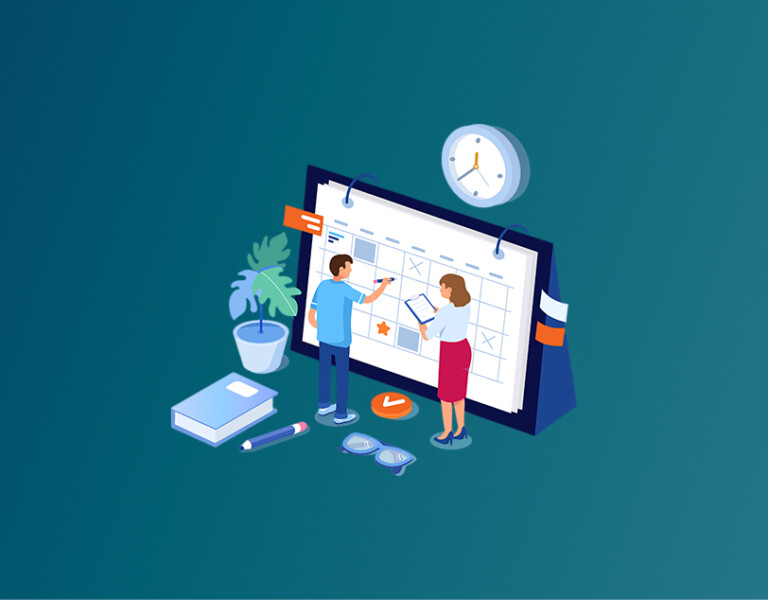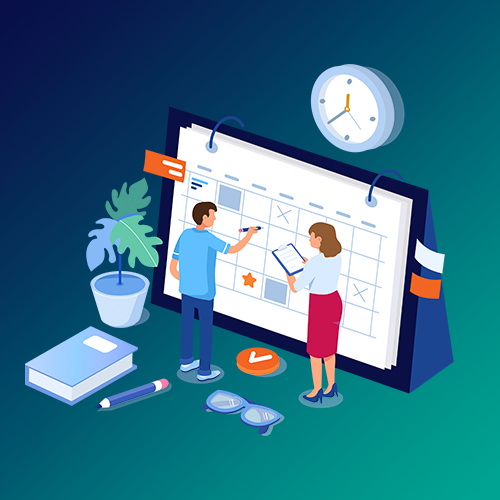

The dimensions of a successful event and meeting strategy
To succeed in creating engaging events, even when the world is turned upside down, you need to stop looking at each meeting and event as a single occurrence. Instead, you need to take a holistic approach and consider your entire event and meeting strategy as a changing process. We call it a multidimensional event and meeting strategy.
You have to start from scratch and map out how each event and meeting fits into your customer journey. Once you’ve done the mapping, you can divide your events and meetings into different groups to create a standardized event model for each group.
To take a holistic approach, you need to make sure that all dimensions are well thought out for your event. They are goals and budget, participants’ groups, event elements, time factors, digital components, and physical components.
1. Set goals and budget
The first step is to define the goals of your business and how your events and meetings will help you achieve these goals. Review your event and meeting features in all relevant areas, for example, marketing, talent management, sales, and customer relations. Set overall goals for each area. These can be both quantitative and qualitative goals, but make sure the goals are SMART (Specific, Measurable, Achievable, Relevant, and Time-bound.)
Review your budget for each event and decide early on what effect you want for the event. Do you want to generate leads? Convey a message to your target group? With a clear goal and concrete budget, you can then plan an event for maximum ROI.
2. Start from the expectations of the participants’ group
Once you have your goals and your budget, your target group should be clear. The target group is your intended event participants, for example, employees, partners, or exhibitors.
When you create an event for your target group, you need to understand what goals and expectations they have for an event. What do they want to get out of attending your event? It is the target group’s goals, expectations, and conditions that determine the content and design of your event.
3. Review what competence you have in-house
When you have set your goals and budget, and know what the target group expects, you can start planning the content of the event so that it delivers value to the target group. In this step, you need to decide which elements your event should consist of. They can, for example, be an agenda with speakers, moderators, breakout sessions, opportunities for networking, or a trade fair exhibition.
As you choose event elements relevant to your specific target group, you create the conditions for high engagement
4. Select a relevant time factor
The time factor determines when and how often the event will take place. It can be a one-off event, continuous meetings, recurring, or on-demand. Just as in the point above, the time factor is determined by the target group’s expectations and conditions. The time factor is an important dimension that needs careful planning, especially if your target group is in different time zones.
5. Review the digital components
Decide and list which digital parts you need for your event. The digital components include your event’s digital platform and the event’s digital content. For example, it can be live video, pre-recorded video, or video-on-demand.
Digital components such as a chat function and ticket solutions can also be functions. Even if you are planning for a physical event, you may need some digital solutions to give your participants a smooth and good experience from sending the invitation.
6. Decide which parts will be on-site
Perhaps you will have a live event where all participants gather in the same place, or it could be an event with participants in several different places that are connected digitally. Plan to make the experience of the event optimal for your target group by having all parts of the event well thought out. Make sure to keep the agenda relevant and interesting, and plan breaks where necessary so that the target group can focus when needed.
You may easily think that live components are only present at events where you meet physically, but this is not the case. All events, even video conferences, will have a certain element of the live dimension. Because regardless of the form your event takes, you need to take into account that the event experience for the participants is always live.
These are the 6 dimensions you should plan according to in your future events and meetings. This multidimensional strategy allows you to take a holistic approach where you find solutions for your various meeting and event needs.
The content and event forms will change in step with how the world and the needs of your participants change. With an agile strategy and well-thought-out dimensions, your business will be able to continue delivering value to your target group despite sudden changes in the world around you.

Book a meeting with one of our advisors to learn how our platform can help you create a future-proof event and meeting strategy for your company.
Book a demo